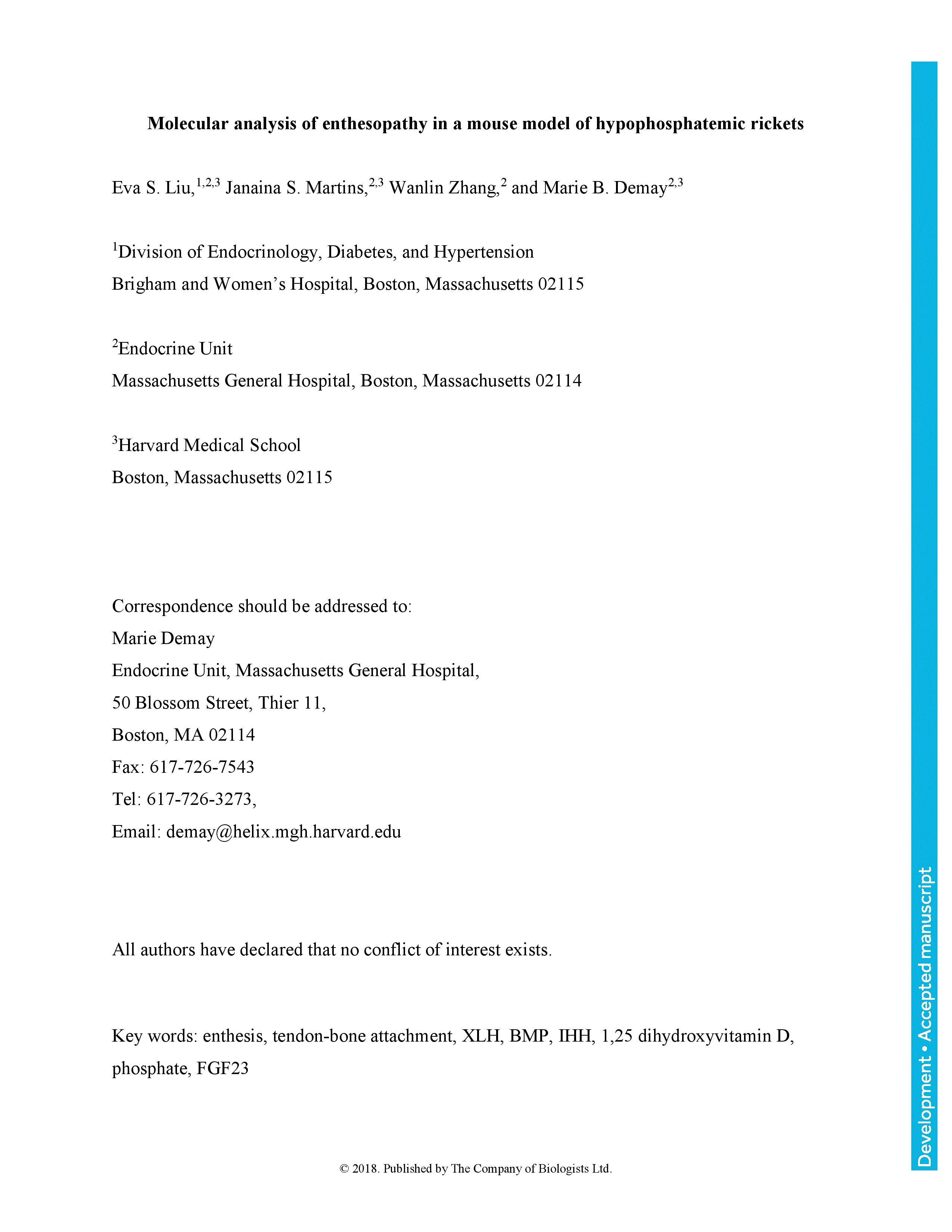The bone tendon attachment site known as the enthesis is comprised of a transitional zone between bone and tendon and plays an important role in enabling movement at this site. X-linked hypophosphatemia (XLH) is characterized by impaired activation of vitamin D, elevated serum FGF23 levels and low serum phosphate levels, which impair bone mineralization. Paradoxically, an important complication of XLH is mineralization of the enthesis (enthesopathy). Studies were undertaken to identify the cellular and molecular pathways important for normal post-natal enthesis maturation and to examine their role during the development of enthesopathy in mice with XLH (Hyp). The Achilles tendon entheses of Hyp mice demonstrate an expansion of hypertrophic-appearing chondrogenic cells by P14. Post-natally cells in WT and Hyp entheses similarly descend from Scleraxis and Sox9 expressing progenitors, however, Hyp entheses exhibit an expansion of Sox9-expressing cells and enhanced BMP and IHH signaling. These results support a role for enhanced BMP and IHH signaling in the development of enthesopathy in XLH.
Molecular analysis of enthesopathy in a mouse model of hypophosphatemic rickets
Currently Viewing Accepted Manuscript - Newer Version Available
- Split-screen
- Views Icon Views
- Open the PDF for in another window
-
Article Versions Icon
Versions
- Version of Record 10 August 2018
- Accepted Manuscript 01 January 2018
- Share Icon Share
-
Tools Icon
Tools
- Search Site
Eva S. Liu, Janaina S. Martins, Wanlin Zhang, Marie B. Demay; Molecular analysis of enthesopathy in a mouse model of hypophosphatemic rickets. Development 2018; dev.163519. doi: https://doi.org/10.1242/dev.163519
Download citation file:
Advertisement
Call for papers: Uncovering Developmental Diversity

Development invites you to submit your latest research to our upcoming special issue: Uncovering Developmental Diversity. This issue will be coordinated by our academic Editor Cassandra Extavour (Harvard University, USA) alongside two Guest Editors: Liam Dolan (Gregor Mendel Institute of Molecular Plant Biology, Austria) and Karen Sears (University of California Los Angeles, USA).
Choose Development in 2024

In this Editorial, Development Editor-in-Chief James Briscoe and Executive Editor Katherine Brown explain how you support your community by publishing in Development and how the journal champions serious science, community connections and progressive publishing.
Journal Meeting: From Stem Cells to Human Development

Register now for the 2024 Development Journal Meeting From Stem Cells to Human Development. Early-bird registration deadline: 3 May. Abstract submission deadline: 21 June.
Pluripotency of a founding field: rebranding developmental biology

This collaborative Perspective, the result of a workshop held in 2023, proposes a set of community actions to increase the visibility of the developmental biology field. The authors make recommendations for new funding streams, frameworks for collaborations and mechanisms by which members of the community can promote themselves and their research.
Read & Publish Open Access publishing: what authors say

We have had great feedback from authors who have benefitted from our Read & Publish agreement with their institution and have been able to publish Open Access with us without paying an APC. Read what they had to say.



